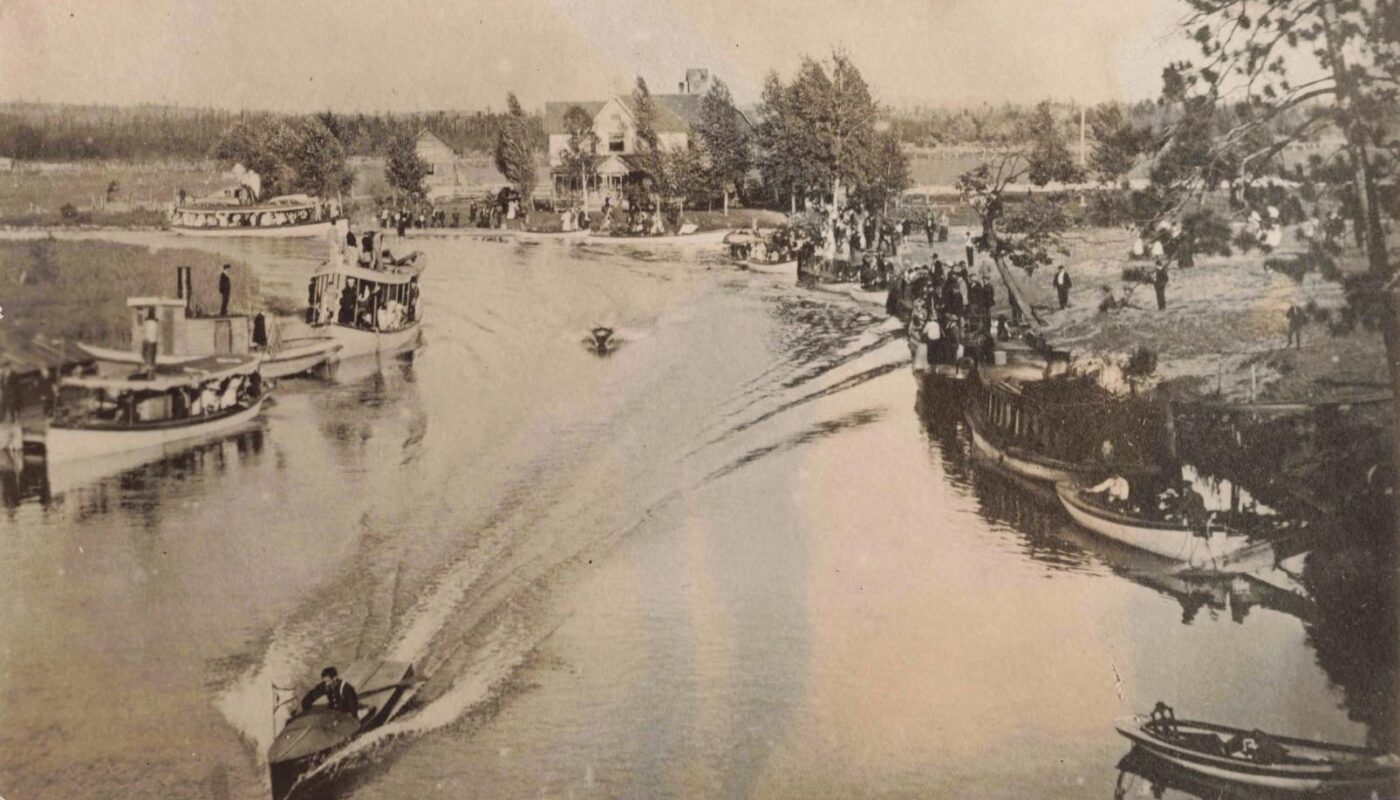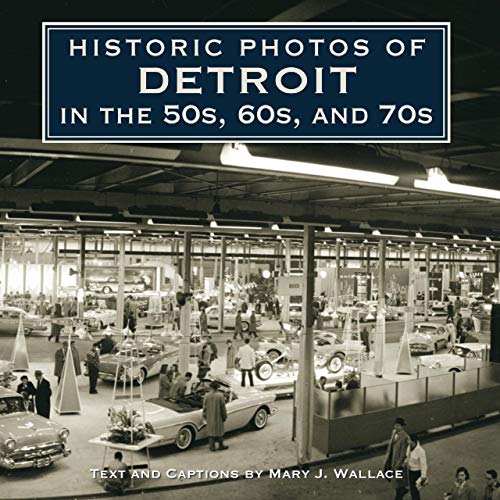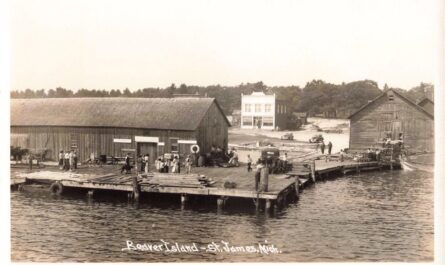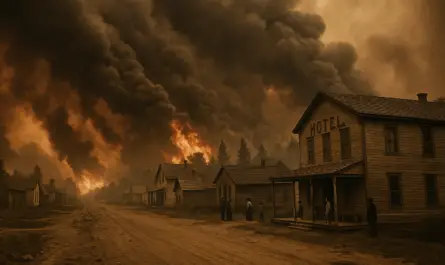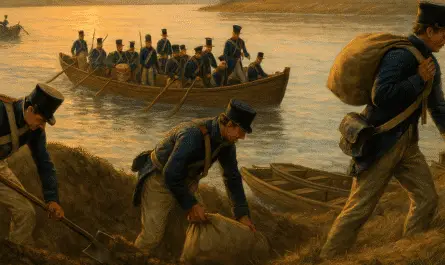The History of Indian River Michigan is the story of a quiet logging village transformed by tourism. Nestled in northern Michigan’s “Tip of the Mitt,” Indian River sits at the southern tip of Burt Lake and Mullett Lake. From 1900 through the 1930s, the town evolved from a pine-logged outpost into a bustling summer destination. Vacationers arrived by rail and by the lakes’ inland waterway, drawn by boating, fishing, and lakeside resorts.
Video – They Said “Nothing Happens Up North”—Then Indian River Turned Into the Hottest Stop on the Waterway
Early Settlement and Railroads
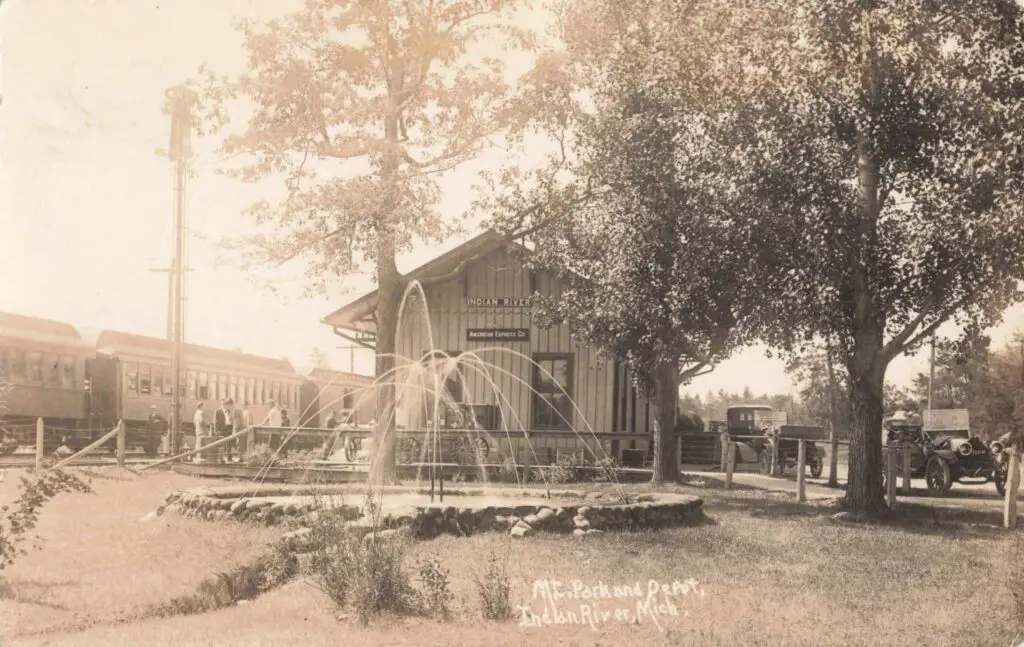
Indian River was platted in 1879 at the confluence of two rivers and lakes. The first general store opened in 1876, operated by pioneer Floyd Martin, who sold a wide range of goods, from groceries to hardware. For two decades, the town grew slowly; its founders had dreamed of a railroad, but it was only in the 1880s that the Grand Rapids & Indiana Railroad laid tracks through Indian River. The arrival of the railroad brought new settlers, lumbermen, and the first summer visitors. By 1900, Indian River was connected to the wider world – not by ocean port or highway, but by rail and by a chain of lakes known as the Inland Waterway.
The Inland Waterway and Steamboat Tourism
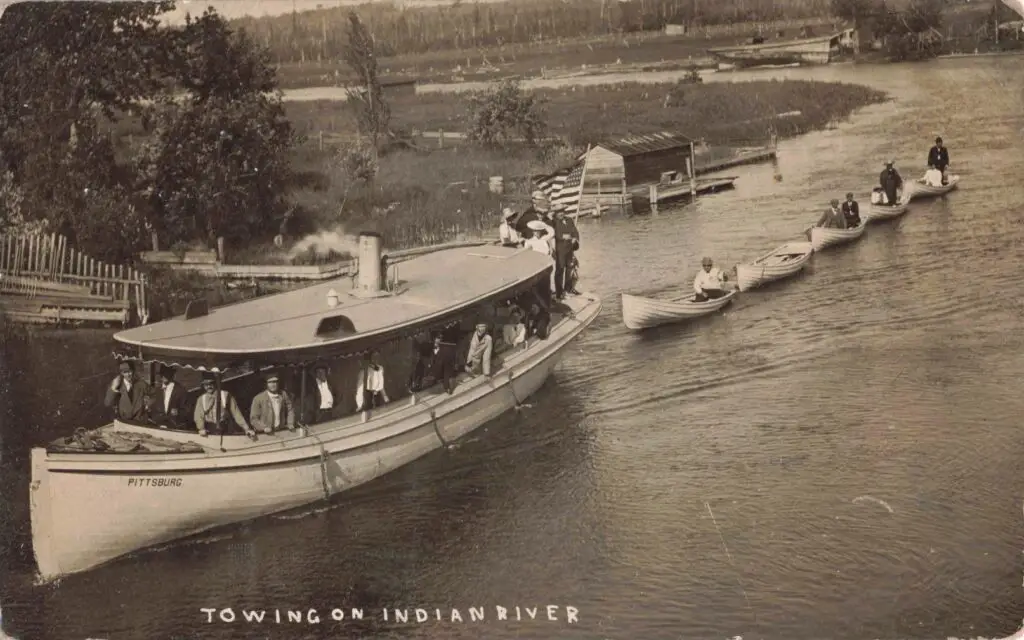
Michigan’s Inland Waterway (rivers and lakes flowing northeast toward Lake Huron) was a natural highway long used by Native Americans and fur traders. In the late 1800s, entrepreneurs saw its tourism potential. Paddle-wheelers and steam launches began running excursion routes from Cheboygan to Conway, stopping at towns along Burt and Mullett Lakes.
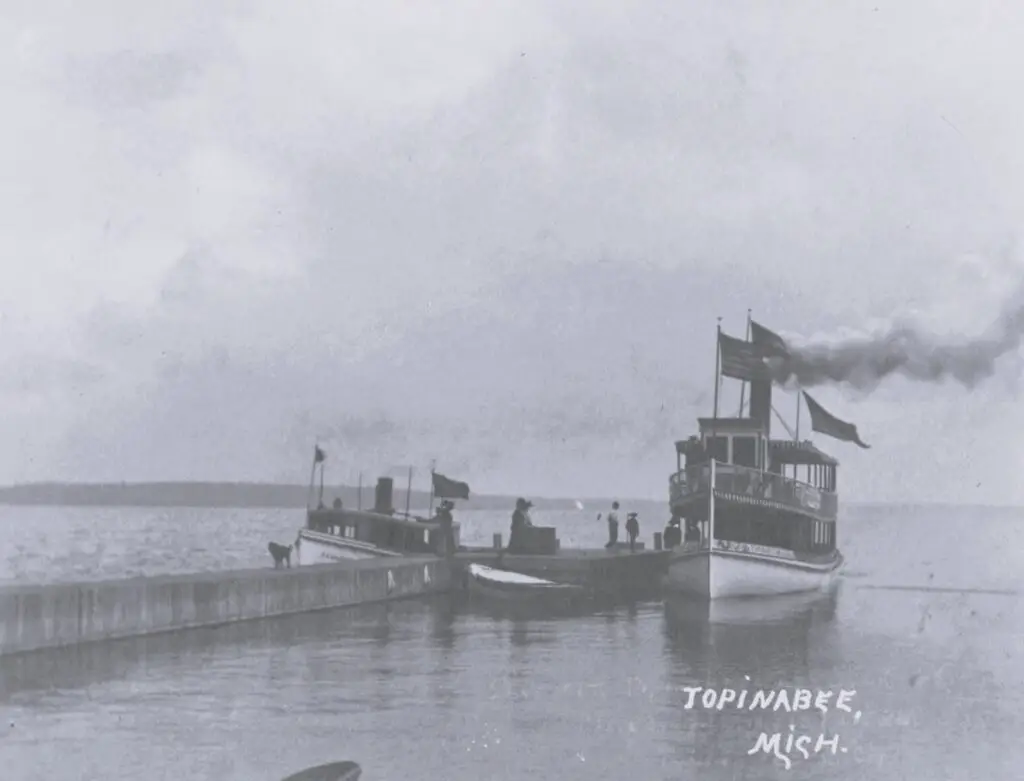
One of the most famous vessels was the double-decked Steamer Topinabee. Captained by Frank Hamill, it offered multi-hour tours: guests boarded in Oden, stopped at villages like Ponshewaing and Alanson, arrived in Indian River for dinner, then cruised on to Cheboygan and Mackinac Island. The Inland Waterway grew so popular that at one point “up to thirty-two boats a day” carried tourists on 2–3-hour excursions. This boom helped Indian River become a resort hub, even as logging waned.
Indian River’s Waterfront Resorts and Attractions
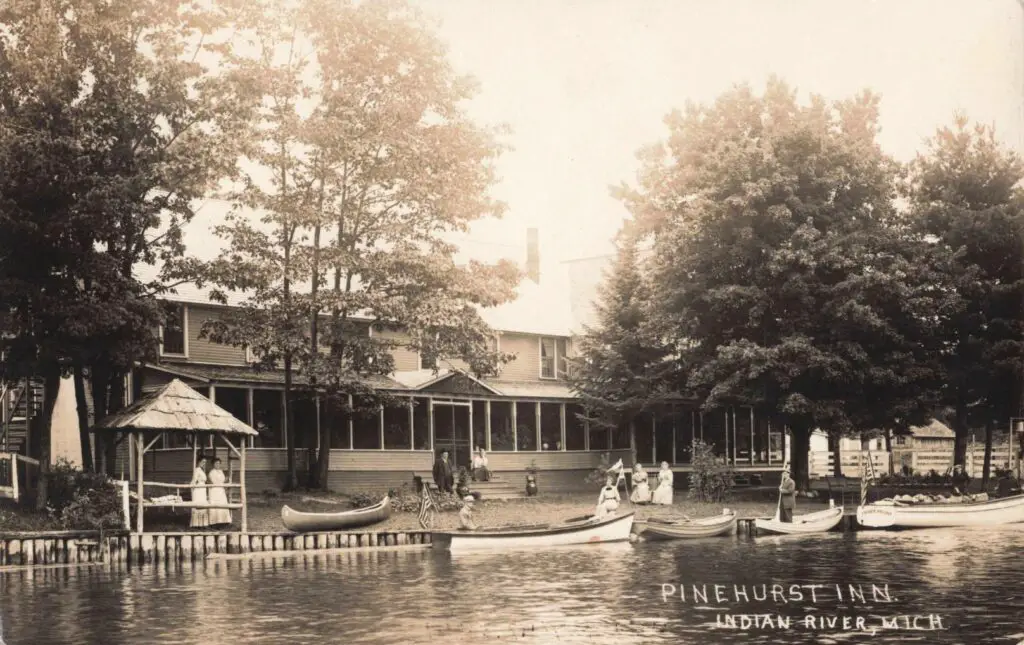
With increased tourism came new lodgings and scenic spots. Indian River’s waterfront featured several inns and docks where steamships could tie up. The Pinehurst Inn, built in the early 1900s, became a local landmark. Guests could rent rooms, gather on the porch under a gazebo or fountain, and even dock their boats at the pier. By the mid-20th century, Pinehurst was remembered as a “rustic bar/motel” known for its lounge, hearty food, and live music. While Pinehurst catered to visitors, other businesses thrived downtown – general stores, drugstores, a hardware shop – serving both locals and seasonal guests.
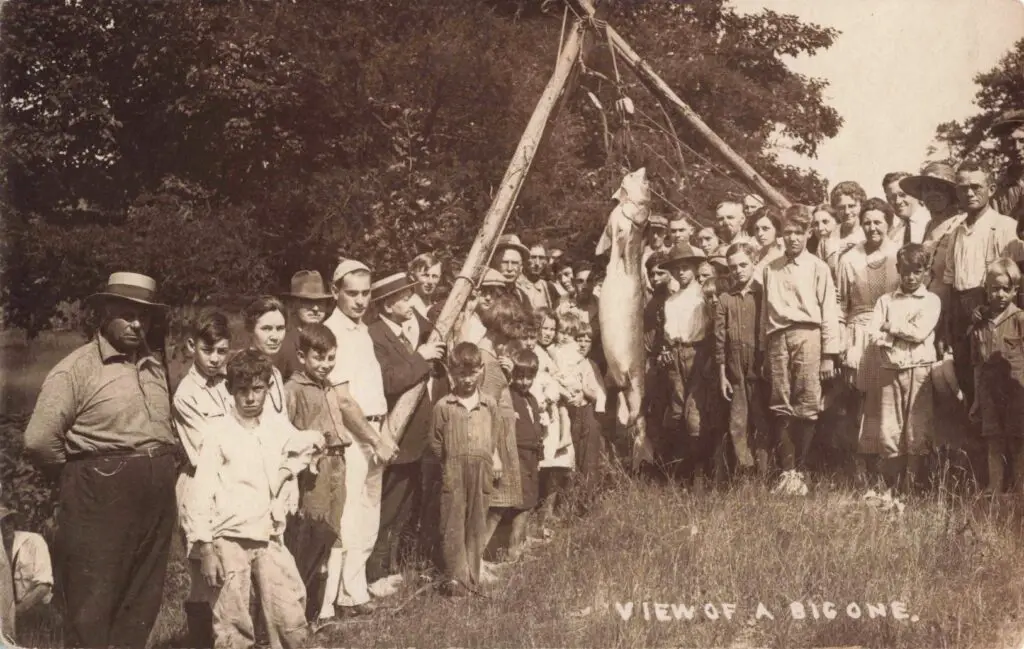
Nature itself was Indian River’s biggest attraction. The town is part of a glacially carved chain of lakes: Burt and Mullett are large and calm, with long, shallow beaches. Surrounded by towering pines, these lakes offered opportunities for fishing, boating, and swimming. In fact, by the 1920s, Burt Lake State Park (on the shore of Indian River) offered a bathing beach for families. Guidebooks of the era recommended canoe trips down the wild Sturgeon River into Burt Lake.
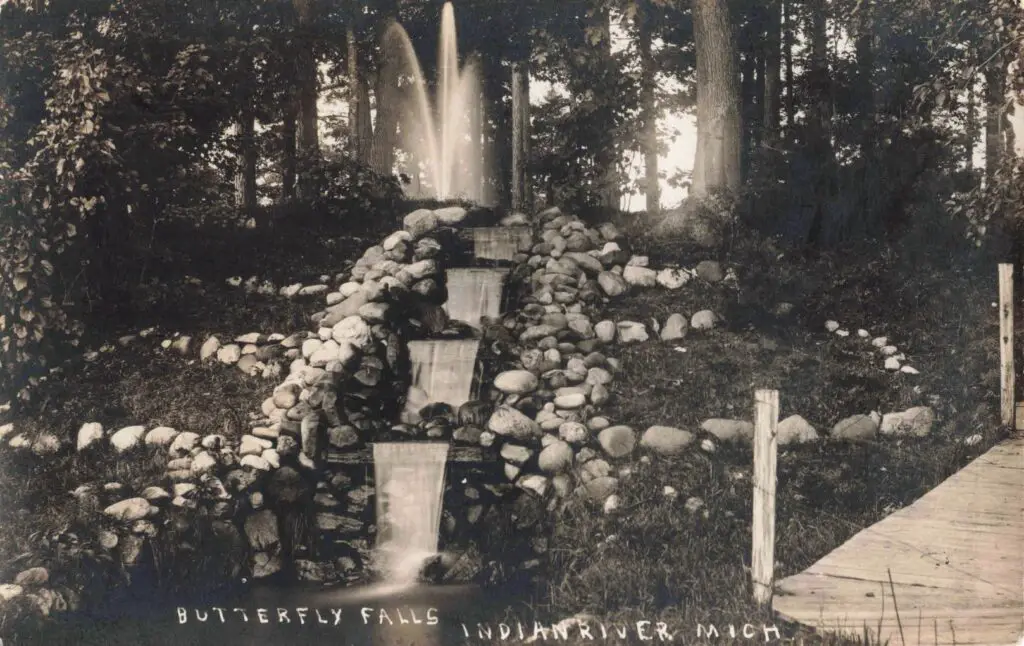
Photographs and postcards also highlight Butterfly Falls, a small cascade on the Indian River where tourists once picnicked. And in 1921 or so, entrepreneurs built the Burt Lake Scenic Tower atop a hill near town. Visitors climbed wooden steps to an observation deck with a brass telescope, paying a fee to admire “a panorama of the lake, the river and the surrounding area”. This tower was one of many such roadside attractions in 1920s Michigan, designed to capitalize on the era’s love of car and boat travel.
Images on this page may contain affiliate links in which we may receive a commission. See our affiliate disclosure for details.
Historic Photos of Detroit in the 50s, 60s, and 70s
Historic Photos of Detroit in the 50s, 60s, and 70s documents what a Metro Detroiter would have experienced through those decades, from the commonplace—to a visit from John F. Kennedy.
Downtown and Community Life At Indian River, Michigan
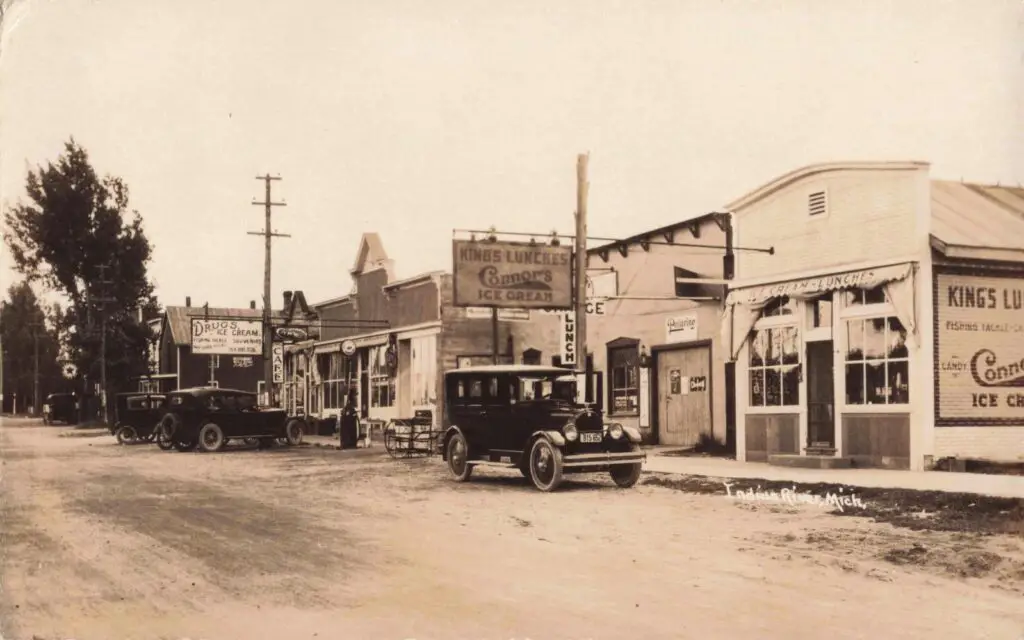
The influx of summer tourists gave Indian River a lively downtown scene. Main Street featured shops where vacationers bought fishing bait, camping gear, or souvenirs. Each summer, the town’s population swelled, and Main Street Cafe, The Goldenrod general store, and other businesses stayed open late. In 191,0 a fire destroyed several wooden buildings, but the community rebuilt quickly. Church groups and civic clubs held ice cream socials and band concerts in the town park, drawing crowds from the waterfront.
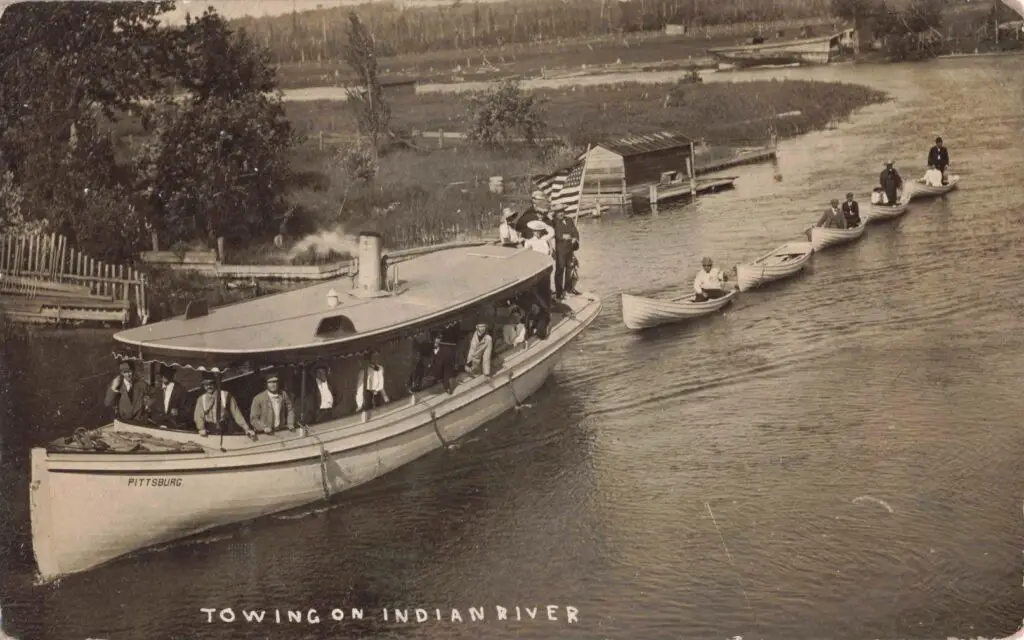
Transportation improvements also came. Besides the railroad, motor roads improved by the 1920s allowed easy car trips from Detroit and Chicago. Boaters could now rent gasoline launches from the River Junction Marina in town. Pine Shores Marina and others sprouted around Burt Lake. Gas pumps and boat repair shops on the docks served the motor-boating craze. In this way, the Indian River waterway continued to fuel local business even as rail traffic declined.
Natural Setting and Recreation
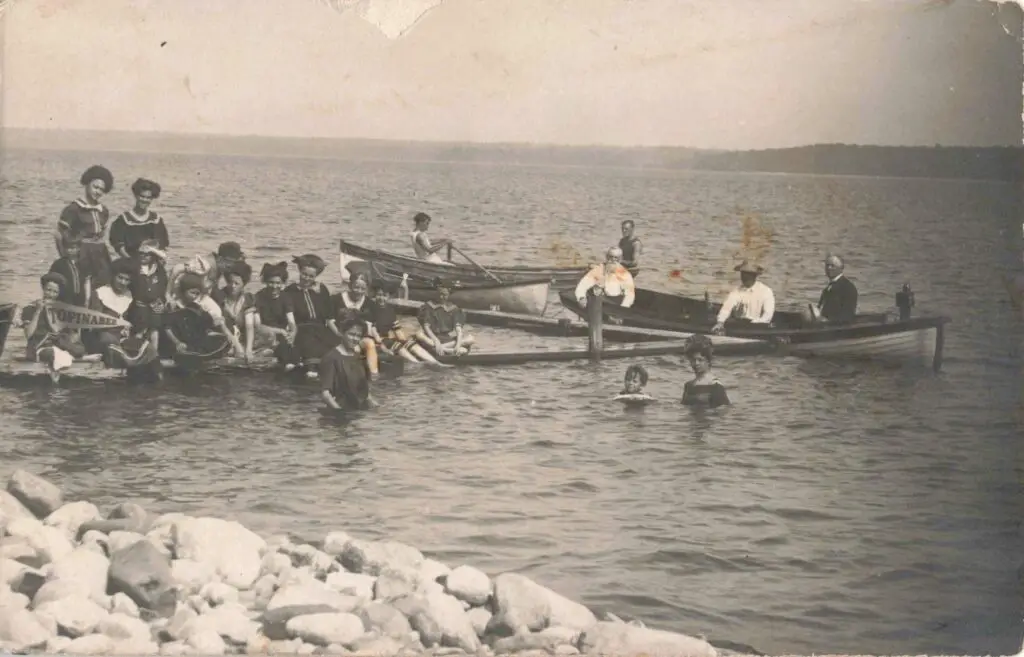
The natural features – lakes, rivers, falls – were woven into everyday life. Schools in Indian River often went on field trips to Indian River State Park on Burt Lake; a 1929 newspaper noted a group “ready for a picnic dinner, bathing, contests, etc.” at that parkd. Families camped under the pines at Burt Lake, while anglers cast lines for bass and trout in the shallow bays. One 1970s camper remembered walking knee-deep on Burt Lake’s sandbar as a child – a lasting memory of just how gentle the water was. Seasonal festivals sometimes centered on the riverfront: Fourth of July boat parades, fishing derbies, and racing events added to the town’s appeal for vacationers.
The 1930s and Legacy
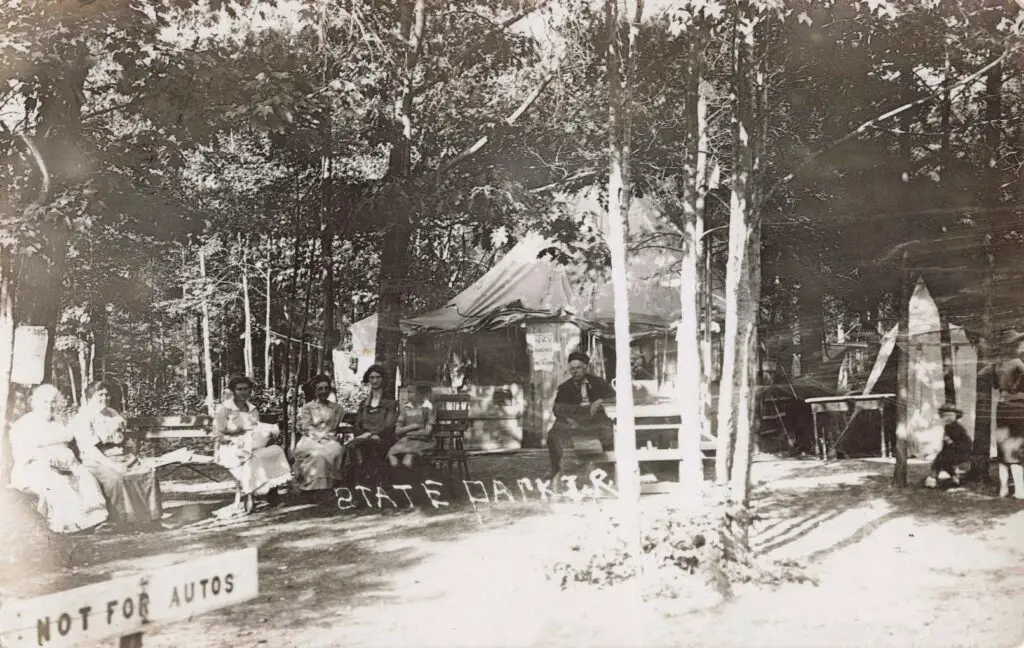
By 1930, Indian River had firmly established itself as a vacation community. Its economy included inns, boat livery services, and recreation shops. But the Great Depression would soon slow tourist travel. Some smaller resorts closed by the mid-1930s, and the number of steamboat cruises decreased. Still, the groundwork laid in 1900–1930 endured. Many summer cottages built in that era survived and remain in use. The Pinehurst building, though altered, still stands as a reminder of those resort days. And the Inland Waterway continues to draw boaters, its history commemorated by a historical marker in Burt Lake State Park.
Final Thoughts About the History of Indian River Michigan
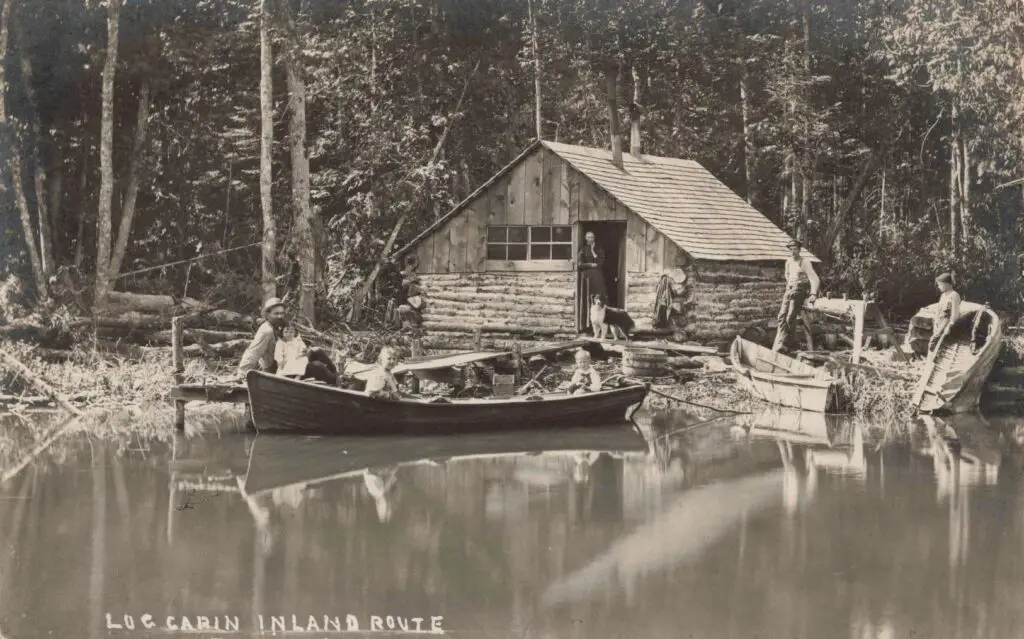
The History of Indian River Michigan shows how tourism reshaped a remote lumber town into a leisure destination. Through resort hotels like Pinehurst, sightseeing attractions such as Butterfly Falls and the Scenic Tower, and the enduring draw of Burt Lake and the river, Indian River built a summer identity that endures today. Its story is woven into Michigan’s broader “Water Wonderland” narrative, illustrating how lakes and rivers can turn a town’s fortune and foster community life along the shore.
Works Cited
- Byron, M. Christine, and Thomas R. Wilson. “Landscapes with a View.” Michigan Blue Magazine, Oct. 2019, pp. 254–258.
- Inland Water Route Historical Society. “Introduction.” 2025.
- Irish Hills Tourist Towers. thumbwind.com, n.d. (cited indirectly for context on scenic towers)
- Robinson, John. “Vintage Photos of Indian River, Michigan: 1900-1950s.” 99.1 WFMK, 5 Sept. 2023.
- Schenden, Laurie K. “It’s OK to Fudge a Bit on Northern Michigan Trip.” Los Angeles Times, 23 Apr. 1989, pp. Travel.
- Michigan Farm Bureau News, 26 July 1929.
- University of Michigan Digital Collections, David V. Tinder Collection. “Bathing Beach at Indian River State Park.” Postcard. 1920s.
